Stats:
Destination: Krakow, Poland
Number of Days Spent: 2 days
Where we stayed: Tournet Guest House - 180 ZTL ($60/night with breakfast & wifi)
Best restaurant: Vincenta Pierogi in Krakow was excellent! Try the lamb, rosemary & thyme (15 ztl - $5) or the highlander's pierogi with sheep's cheese, potato & garlic (11 ztl - $3.60). They also have a spinach and feta one that we wished we had tried. Down the same street there is an excellent crepe place that has chocolate crepes for 4.5 ztl ($1.50). On the main square there is an excellent ice cream shop, Stodkl Wentzl, selling generous $1 scoops of homemade ice cream!
Best of: A fire breathing dragon, does it get any better?!?
Worst of: Schindler's factory was closed.
Most Memorable: Eating the best polish sausage from a man in a van near the bridge a 20 minute walk from old town.
Useful Tip: On Mondays, the best parts of the castle are free; but if you want to see it all - come another day as the rest is closed.
Krakow, often dubbed the "Next Prague" is a surprisingly interesting destination. While I personally don't think there can be "another Prague", if you are looking for more medieval fun, Polish culture in a nutshell and some interesting architecture, Krakow will not disappoint. There have been people living here since the Stone Age...literally. The city served as the capital of Poland for about 400 years between the 13th and 17th centuries establishing itself as an important city for the arts as well as host to the Kings. All these things combine for an interesting stop and a must for any Poland visit!
Set atop Wawel hill sits Krakow's Castle. First built in the 13th century, the castle has seen many changes over the years. The architecture of the cathedral is a hodgepodge of styles, designs and different generations and somehow it works. It's a bit of a symmetrical nightmare with no two towers, spires or domes alike; but that is what makes it so unique. Inside, some of Poland's greatest kings and queens rest eternally.
Behind the cathedral lies an impressive collection of armor and weapons once belonging to the Royal families of Poland. In another building, excavations are still being done. Like many cities all over Europe, the layers of history are deep. A raised platform takes you over an area where they have dug all the way to remains of the stone age settlement that first inhabited the hilltop.
When the Austrian army took over the castle, they needed a place to practice marching so down came the two oldest churches in the present day courtyard. All that remains today are the foundations. Believers in Chakra will also enjoy the "good vibes" in the rear courtyard behind the cathedral. Believers claim this to be one of the 7 spots on Earth where the energy radiates from. Believe it or not, it's a fun side note either way.
Aside from historical history, Krakow also boasts a few 20th century sights, mostly centered on the hometown hero, Karol Wojtyla; the late Pope John Paul II (as I will call him throughout the rest of this post). One can hardly walk in this town without seeing a banner, poster or statue depicting him.
The main street that runs from the castle to the city's main gate is known as the Royal walk. The coronation procession would pass through the gates of town and down to the cathedral in the castle with much pomp and circumstance. Like the Kings of yore, we strolled down the street taking in the sights along the way. The walk is only two kilometers in total and includes most of the major sights of the city.
Entering the city these days is a lot easier than back then. The main wall is all but gone with a few exceptions, and the large moat that used to surround the castle has since been filled in and is a lovely park, called the Planty, has taken it's place. Upon entering the old city, you pass a little yellow house on the right. Pope John Paul II, as Bishop of Krakow, lived here. More of a note than an actual site as you cannot go in; the current Bishop of Krakow lives there now.
Taking a detour from the Royal Walk, we popped into the Pope's Church, but the name escapes me. While not particularly old, the decor was done by some of Poland's great modern artists from the 20th century and the Pope preached here for 12 years. It's certainly worth a stop!
Back on the main walk, about 300m down from the church, the street opens into the town's main square. One of the largest in Europe, the square represents another hodgepodge collection of Architecture that somehow meshes and works. The main church here (Krakow has a TON of churches if you haven't caught on - over two dozen in the old city alone!) looks like it has two bell towers, that, of course, don't match. In reality it has only one, the taller tower is a watch tower with a unique story on its own. Back in the day a trumpeter watched over the city looking for potential invaders to the city. If any were spotted the trumpet was used to warn the citizens of an imminent attack. Today it is operated by bored firemen, but a trumpeter appears on the hour and plays a tune seemingly ending abruptly. As legend has it, one such man was shot with an arrow ending his call prematurely and the tradition continues in honor of the ill fated musician.
In the center of the square, the legendary cloth market stands. Once the sight of the cities main shopping district, the Cloth Market now houses mostly souvenirs and gifts. We strolled though the market and had a little picnic on square soaking up the atmosphere.
Passing through the square and heading out of the city we come to the most complete part of the old city walls, along with the Barbican. The barbican was set up in front of the main gate to the city as a secondary defense. Today, it's a kitschy medieval museum of sorts...we didn't think it looked worth the price of admission but the restored outer walls were nice.
Back on the main square, we went into the cathedral. The intricately carved wood altarpiece dates from the 17th century and is one of the finest examples of its kind.
We took the train across the river and walked out to Schindler's Factory after being told at the tourist info that it was open. Unfortunately they were wrong as the place was closed. Guess we will have to settle for the movie a little while longer.
Perhaps all the comparisons to Prague come from the similarities of the Jewish Quarters. The polish kings were known throughout Europe for their religious tolerance. As a result, Poland became a safe haven for Jews, albeit with the same requirements of living in ghettos and only small spaces for cemeteries, and the population of Jews swelled. Sadly, with being the first and longest country occupied by Nazi Germany, Poland suffered the most casualties. The synagogues around the quarter are now museums as the Jewish population has never fully recovered. After visiting Auschwitz and just coming from Prague, we could really only handle the New Jewish Cemetery. In a cruel twist, the Nazis used the existing tombstones in the construction of nearby Auschwitz. After the war, the broken tombstones were brought back and a touching memorial and wall were constructed.
One of the great joys of Krakow is the nightlife. Bars are open late and everyone comes out to stroll in the plaza making for excellent people watching opportunities. If you are lucky, a few kids will start break dancing. Our two personal favorites however can only be found in Krakow...Krak the fire-breathing dragon; and the infamous man-in-a-van-under-the-bridge selling sausages from 10pm on.
The "man" is actually two burly looking dudes with a grill going just off one of the main highways out of town under a bypass. The van is communist era adding a little atmosphere to the experience. Of course, what makes it so infamous is the tasty Kielbasa's served up cheaply. We have to admit that they were some of the best we have ever had.
A long, long time ago; in a land not so far away, there once lived a dragon named Smok Wawelski. Smok lived in a cave under Wawel hill and was said to breath fire and eat livestock and villagers alike. One day, a local farmer came up with a plan. He stuffed a goat with sulfur and placed the goat outside the dragon's lair. Upon devouring the goat, Smok became so thirsty that he drank and drank the water from the river until he exploded. The village was saved! The young farmer was given the King's daughters hand in marriage and they all lived happily ever after. That is until the Tartars, Swedes, Monguls, Germans, etc. came invading.
One of the little known facts about Krakow is that it also is home to some great works of art. The local art scene has had moments of brilliance as evidence by several art galleries in town. We opted to visit the Czartoryski Museum, a personal collection that has grown over the years and includes a very rare piece. As one of only 4 existing oil paintings done by Leonardo da Vinci (one of which is the Mona Lisa), The Lady with an Ermine is a striking piece once again proving the master artist's prowess. Unheard of in his day, the subject is looking off screen where the standard pose was the norm for the day. As in the name, she is stroking an ermine, the nickname for her lover, a married Baron who commissioned the painting. The rich colors and smooth lines are easy on the eyes and unlike the Mona Lisa in the Louve, you can actually get close enough to see this one! There is also a Rembrandt, The Good Samaritan, the famous fable from the Bible brought to canvas...but the Da Vinci is the star of the show.
On our way out of town we took a drive through the suburb of Howa Nuta (New Steel), also known as the Communist District. Howa Nuta was built by the Soviet led communists as what they considered to be the perfect society. It was one of only two places ever constructed in such a manner outside of the USSR. The "perfect" city consisted of identical housing units sprawled out along a grid of tram tracks, all leading to the focal point of a Steel Plant, originally called Lenin Steel Works. Dad would step outside his door, get on the tram and be whisked away for a long shift down at the steel plant where the most rivets made in an hour would make you a hero. Mom would take care of the house and make sure the kids got to their self contained schools. Every block had its own school, the shops only sold what was necessary, and a small garden area. As parks were seen as a waste of time, few existed.
It was in this setting that Pope John Paul II gained world fame. The future Pope struggled for years to get the communist regime to allow him to build a church here. He finally got his wish, and as payback for all the years of set back and denial, had the church built in the shape of Noah's Ark, a symbol of the churches constant struggle against the rising tide of communism. The church went up, all of western Europe sent gifts, like the 7 bells in the photo below from a bishop in Denmark, and Pope John Paul II was seen as a hero worldwide. Some attribute his actions in Poland with the beginning of the fall of communism. His name has recently been mentioned in terms of sainthood...only time will tell.
Upon leaving Krakow, we returned to Leann's and packed our bags for Turkey - next stop Istanbul!

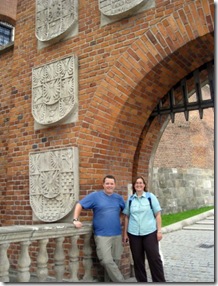
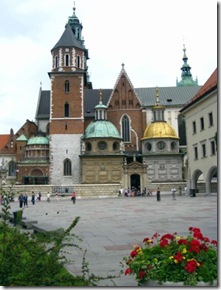
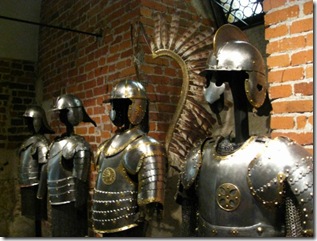
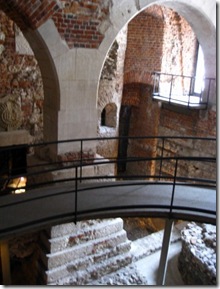
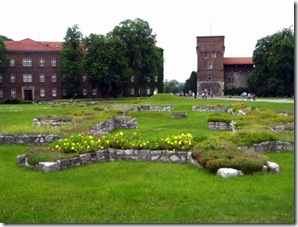
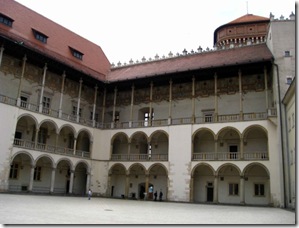
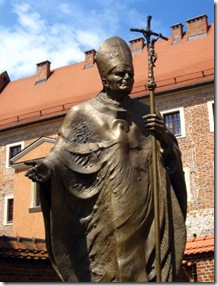
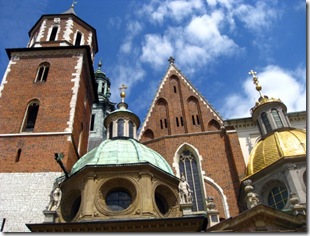
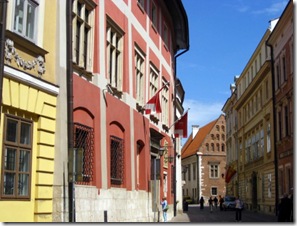
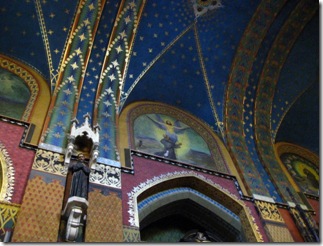
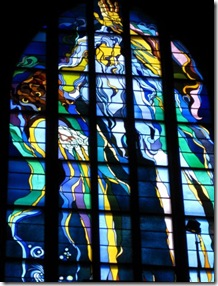
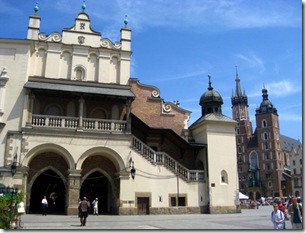
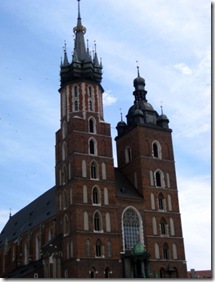
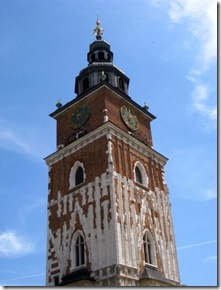
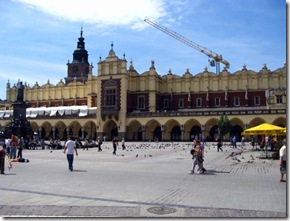
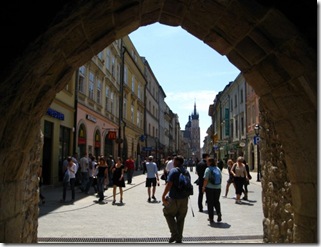
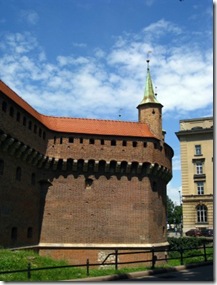
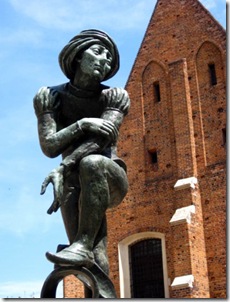

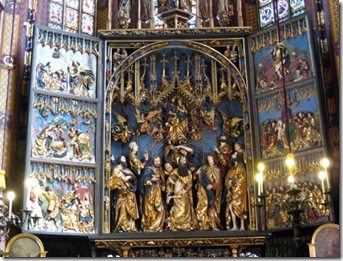
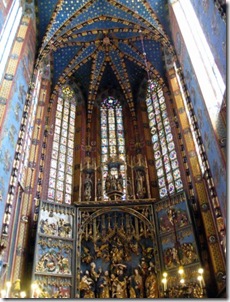
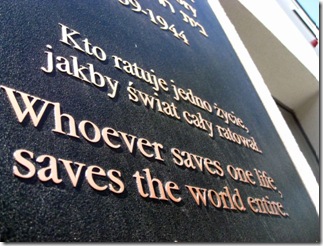
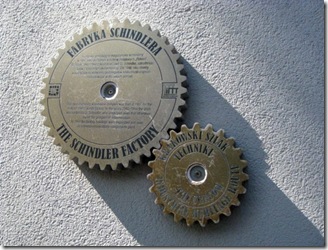
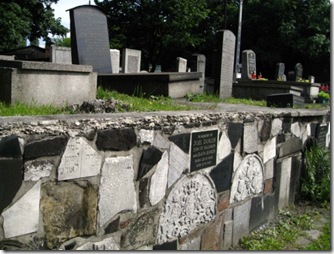
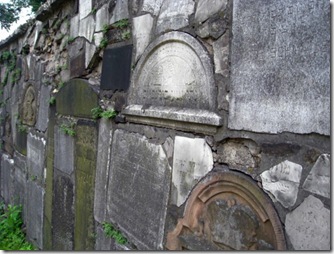
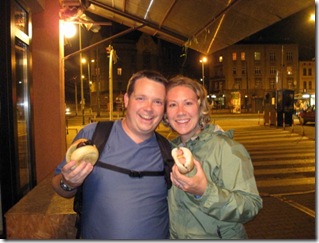

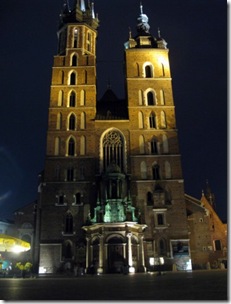
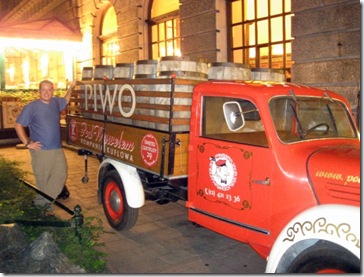
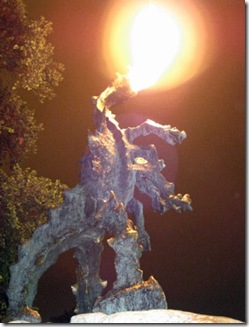
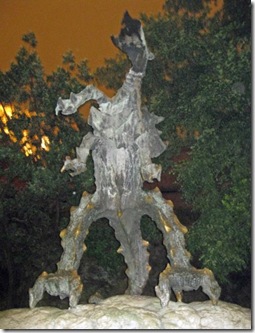
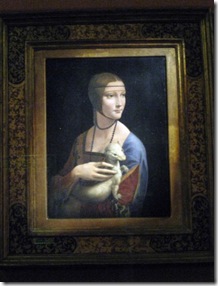
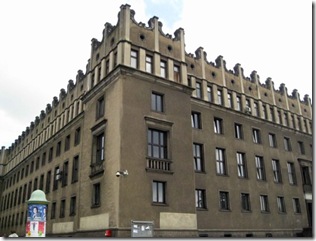
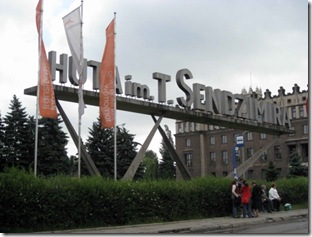
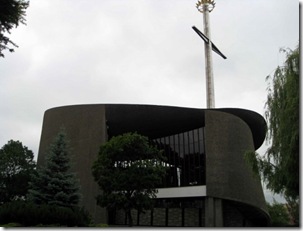
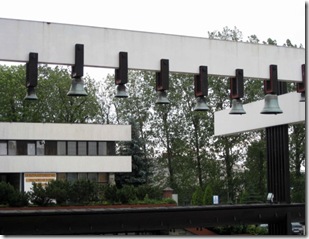
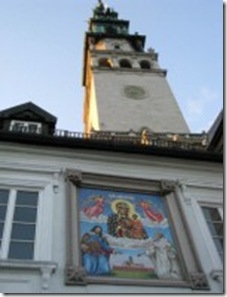
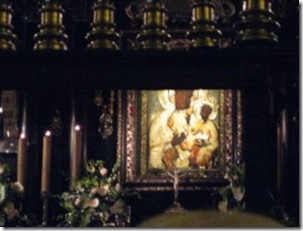
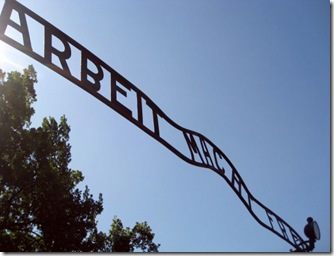

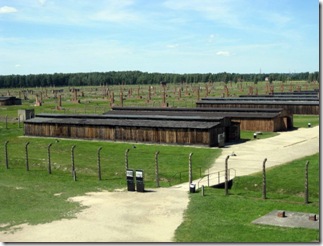
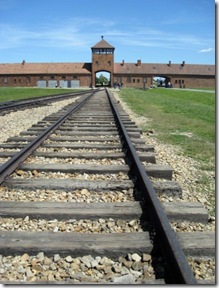
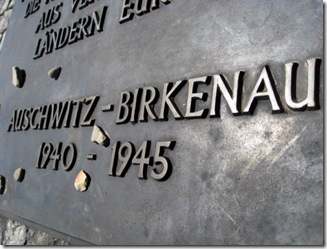
![IMG_3058 [640x480]](http://lh5.ggpht.com/_XPN-SmOfumQ/SlI2tqOoz5I/AAAAAAAACLQ/WNSqryDjlxc/IMG_3058640x480_thumb.jpg?imgmax=800)
![IMG_3062 [640x480]](http://lh6.ggpht.com/_XPN-SmOfumQ/SlI2v84I_PI/AAAAAAAACLY/AYmlL-awWI0/IMG_3062640x480_thumb.jpg?imgmax=800)
![IMG_3044 [640x480]](http://lh3.ggpht.com/_XPN-SmOfumQ/SlI2y3vhzzI/AAAAAAAACLg/MDGCWScDsNU/IMG_3044640x480_thumb.jpg?imgmax=800)
![IMG_3068 [640x480]](http://lh6.ggpht.com/_XPN-SmOfumQ/SlI21dPieEI/AAAAAAAACLo/-RZr3lth5Fs/IMG_3068640x480_thumb.jpg?imgmax=800)
![IMG_3070 [640x480]](http://lh3.ggpht.com/_XPN-SmOfumQ/SlI23-OVA-I/AAAAAAAACLw/5EaApbcUWjI/IMG_3070640x480_thumb.jpg?imgmax=800)
![IMG_3196 [640x480]](http://lh5.ggpht.com/_XPN-SmOfumQ/SlI25ixIn2I/AAAAAAAACL4/YRbRGZsRFsA/IMG_3196640x480_thumb.jpg?imgmax=800)
![IMG_3194 [640x480]](http://lh4.ggpht.com/_XPN-SmOfumQ/SlI28UPkDRI/AAAAAAAACMA/cDTBoTvgIZM/IMG_3194640x480_thumb.jpg?imgmax=800)
